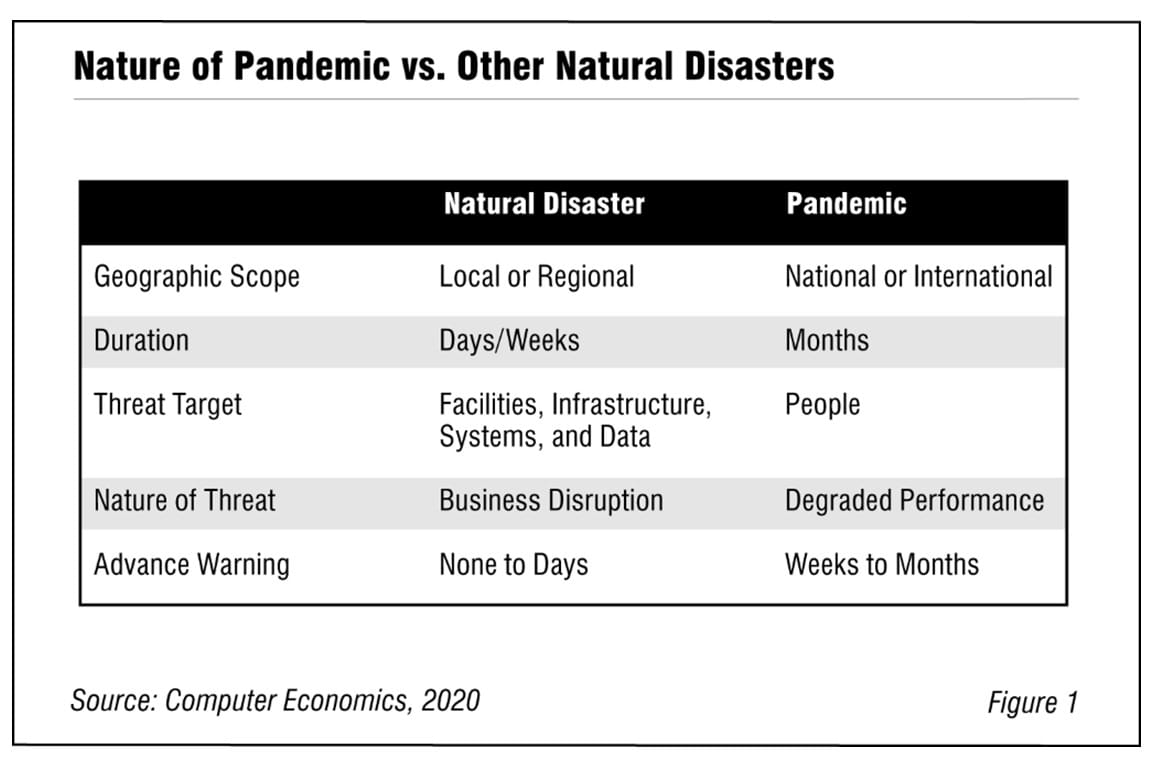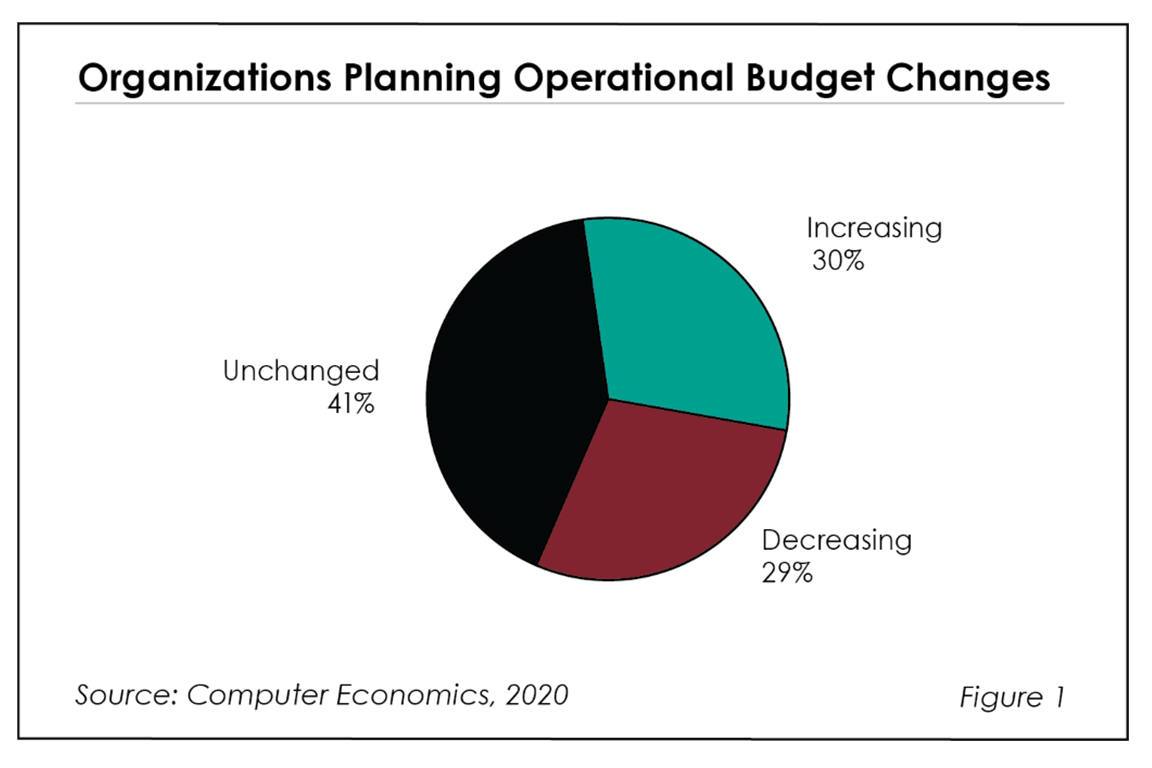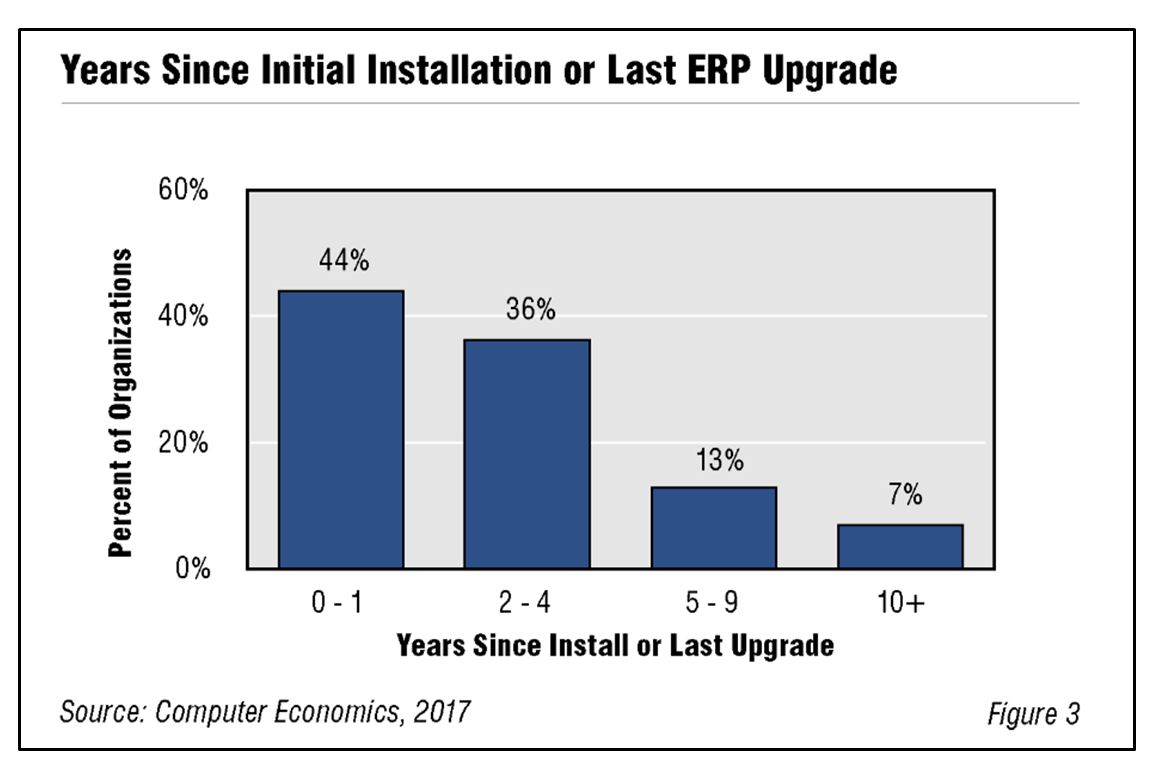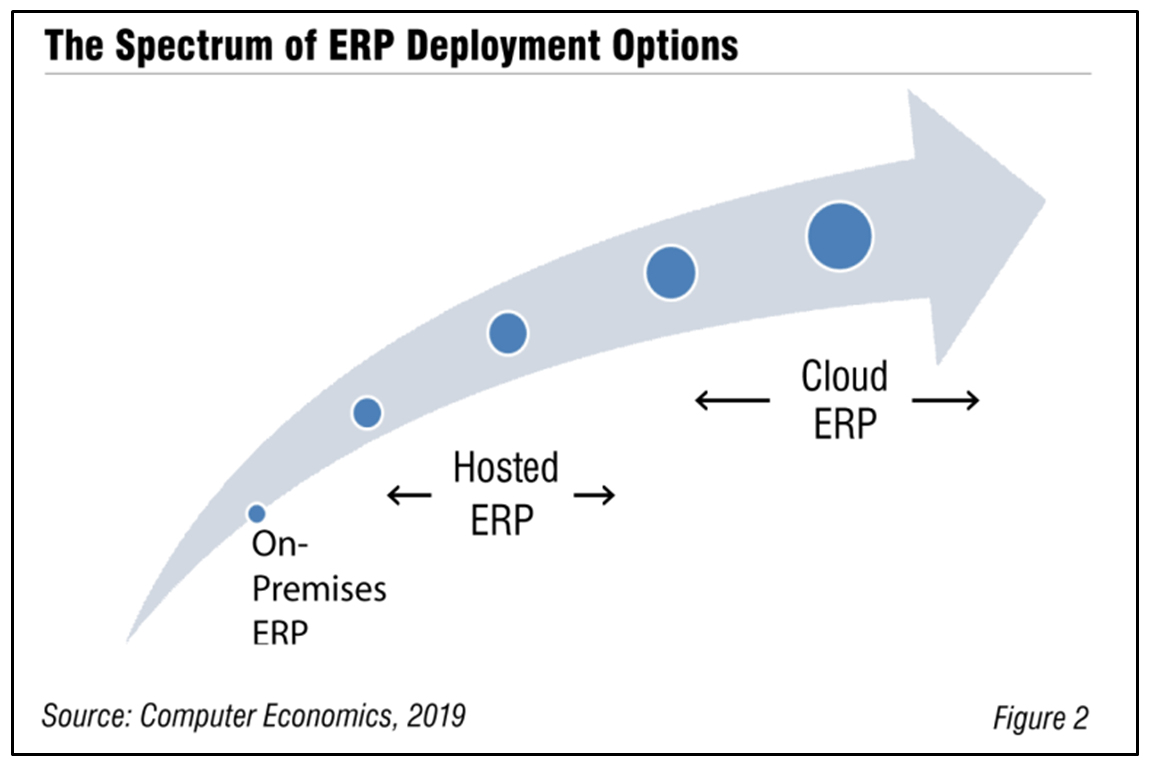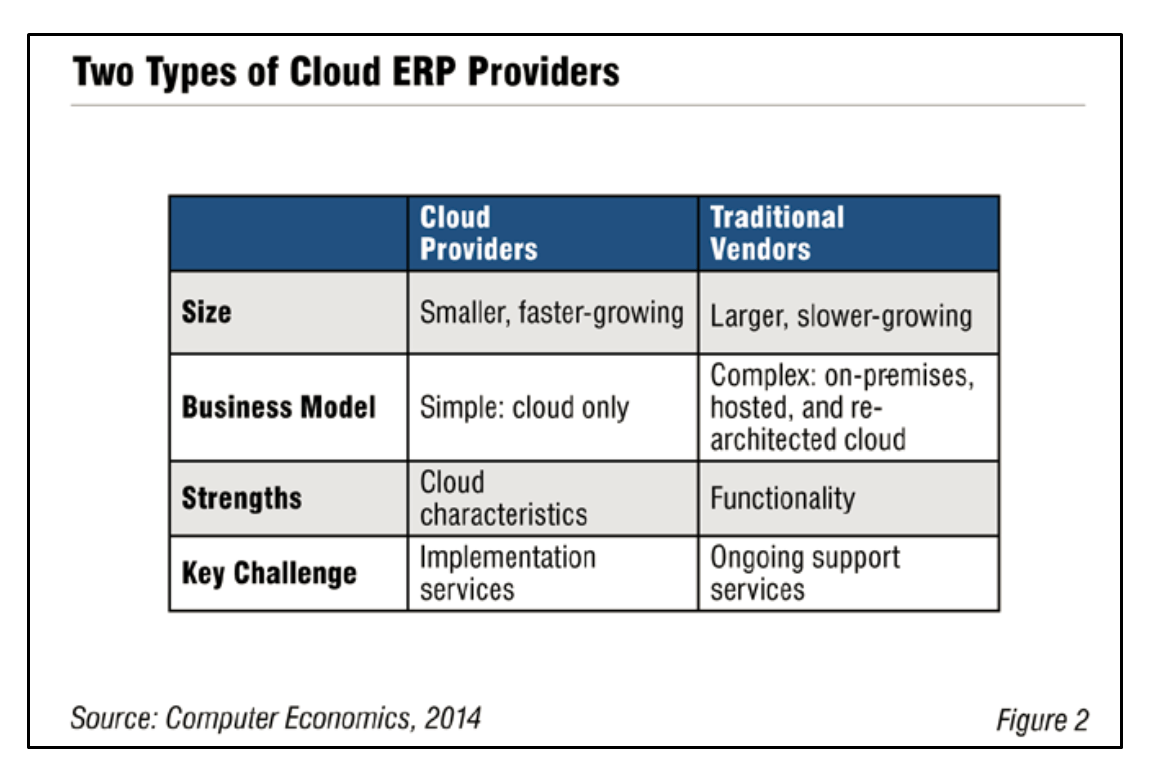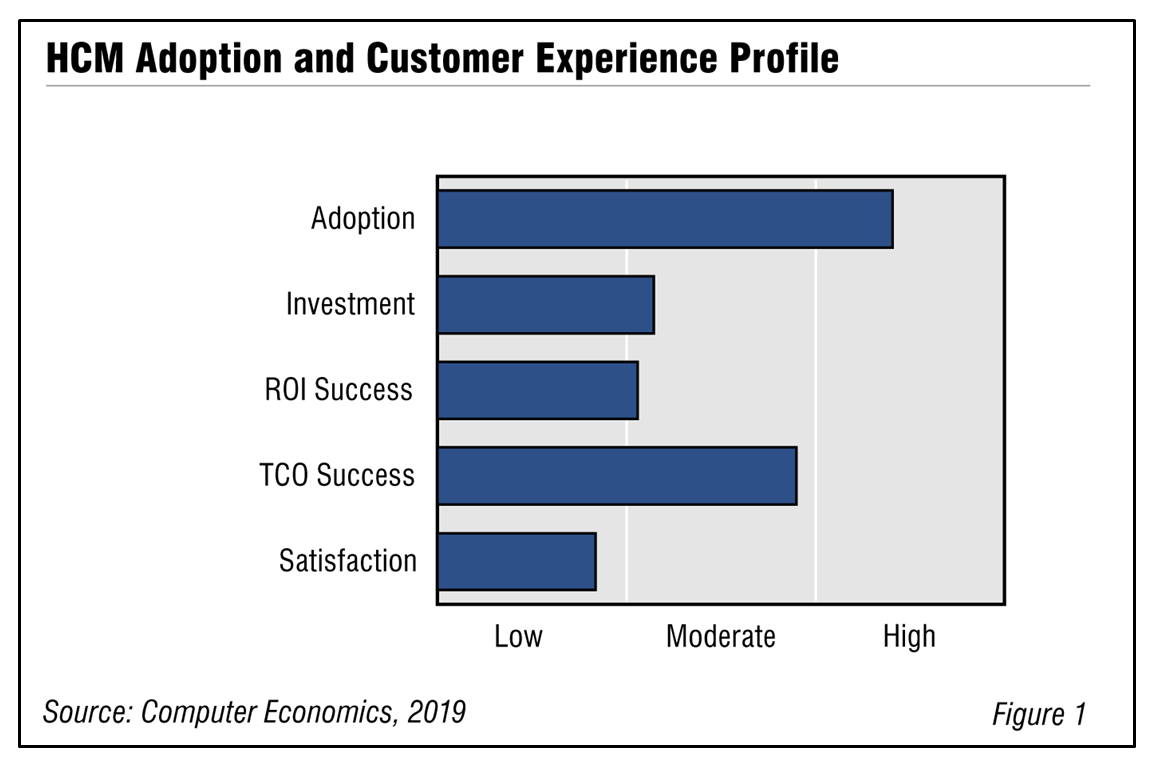Latest Reports
-
![Wuhan Coronavirus Shows Need to Include Pandemic Scenarios in Business Continuity Planning Fig1WuhanCronaRB - Wuhan Coronavirus Shows Need to Include Pandemic Scenarios in Business Continuity Planning]()
Wuhan Coronavirus Shows Need to Include Pandemic Scenarios in Business Continuity Planning
The Wuhan coronavirus (nCoV2019) rampaging through China has led to a massive quarantine in that country, the temporary closure of hundreds of schools and businesses, and an extensive travel ban. This latest threat reminds us that most IT organizations have not incorporated countermeasures specifically to deal with pandemic scenarios.
February, 2020
-
![IT Budgets Show K-Shaped Recovery Fig1Impact of COVID 19 on IT Organizations in 2020 - IT Budgets Show K-Shaped Recovery]()
IT Budgets Show K-Shaped Recovery
A new special survey by Computer Economics in August through September, 2020 shows a K-shaped recovery from the pandemic has begun. Nearly an equal number of companies have increased their IT budgets in response to the pandemic as those that decreased them, with slightly more actually increasing them. This research byte is a summary of the full report Revisiting the Impact of COVID-19 on IT Organizations in 2020.
October, 2020
-
![One Fifth of Organizations at Risk of Technical Bankruptcy Fig3TechnicalBankruptcyRB - One Fifth of Organizations at Risk of Technical Bankruptcy]()
One Fifth of Organizations at Risk of Technical Bankruptcy
In recent years, it has become popular to describe organizations with an enterprise system that has become out of date because of accrued unapplied updates as being in “technical debt.” If organizations ignore this debt too long, it can lead to what we refer to as “technical bankruptcy.” An enterprise system in technical bankruptcy is one where the organization cannot, or finds it exceedingly difficult to, pay off the technical debt. At this stage, the system becomes a true legacy system, frozen in the past and extremely difficult to upgrade.
March, 2017
-
![Drawing the Line Between Cloud ERP and Hosted ERP Fig2CloudandHostedERP RB - Drawing the Line Between Cloud ERP and Hosted ERP]()
Drawing the Line Between Cloud ERP and Hosted ERP
Traditional ERP vendors are responding to the threat of cloud ERP by offering hosted deployment options for their on-premises systems. How does hosted ERP differ from cloud ERP, and how can a buyer choose between them? This Research Byte is a summary of our full report, The Differences Between Cloud and Hosted ERP and Why They Matter.
January, 2019
-
![Cloud Users Enjoy Significant Savings Fig2CloudUsersRB - Cloud Users Enjoy Significant Savings]()
Cloud Users Enjoy Significant Savings
IT organizations that have successfully made the transition to the cloud enjoy significantly lower IT costs than industry peers who continue to operate large data centers and host most of their applications on premises, an Avasant Computer Economics study on the benefits of cloud computing found.
April, 2016
-
![A Guide for Cloud ERP Buyers Fig2CloudERP2014 - A Guide for Cloud ERP Buyers]()
A Guide for Cloud ERP Buyers
As organizations realize the benefits of cloud computing, an increasing number are committed to moving as many of their applications as possible away from their on-premises infrastructure. Moving the bulk of an organization’s systems to the cloud means that ERP—typically the largest single application—also must move to the cloud. Without cloud ERP, an organization will still be running a significant percentage of its application portfolio on-premises.
August, 2014
-
![As SaaS Matures, It Is Slowing Down Just Like the Rest of Us Fig1SaasAdoption - As SaaS Matures, It Is Slowing Down Just Like the Rest of Us]()
As SaaS Matures, It Is Slowing Down Just Like the Rest of Us
It is time to stop thinking of SaaS as a new technology and think of it as a mature incumbent. As such, we would expect a few things to begin to happen—investment to slow, ROI to be slightly harder to achieve, and satisfaction to drop. This Research Byte (a summary of the full report) explains why.
September, 2020
-
![Everything is Sunny for Mobile Apps MobileAppFig1 - Everything is Sunny for Mobile Apps]()
Everything is Sunny for Mobile Apps
More than a decade has passed since the Blackberry and iPhone changed how employees get work done. Yet there is still steady investment in mobile apps to support an increasingly mobile workforce. This Research Byte is a summary of our full report, providing a summary of mobile apps adoption and investment trends as well as economic and customer experience for those that have adopted the technology.
April, 2020
-
![IoT Customers Happy, So Why Is Adoption Stalling? Fig2IOT Adoption - IoT Customers Happy, So Why Is Adoption Stalling?]()
IoT Customers Happy, So Why Is Adoption Stalling?
One of the most talked-about technologies in recent years is the Internet of Things (IoT), but despite generally happy customers, IoT has not yet achieved widespread adoption. The immaturity of commercial solutions is likely the largest aspect holding back IoT, though that is starting to change. This Research Byte is a summary of our full report, which covers IoT adoption and investment trends, providing data on how many organizations have the technology in place, how many are in the process of implementing it, and how many are expanding implementations.
August, 2019
-
![HCM Ever Popular, but Satisfaction Lags Fig1HCM - HCM Ever Popular, but Satisfaction Lags]()
HCM Ever Popular, but Satisfaction Lags
Human capital management (HCM) systems are becoming increasingly popular, but, like most complex business systems, they can be a challenge to implement. Integrating HCM with other back-office systems can be a headache. From a return on investment and total cost of ownership point of view, HCM is moderately successful. But compared to other technologies in our annual Technology Trends survey, customer satisfaction is low. This Research Byte provides a summary of our full report on HCM adoption and customer experience.
August, 2019
-
![Mobile Device Adoption is All About the Apps Fig2Mobileapp - Mobile Device Adoption is All About the Apps]()
Mobile Device Adoption is All About the Apps
Last year, mobile device adoption in the enterprise was plummeting, and it looked like the decrease would continue. Planned investment was low, and our argument was that the devices themselves just weren’t that sexy. The “action” was in the applications, and most enterprises were putting their investment there. This is still true, but surprisingly, mobile device adoption not only recovered but exceeded recent highs. This Research Byte examines mobile and wearable device adoption and investment trends based on our full report.
October, 2019
-
![Despite Gains, ERP Still in the Cellar Fig1 ERP Adoption - Despite Gains, ERP Still in the Cellar]()
Despite Gains, ERP Still in the Cellar
Enterprise resource planning (ERP) systems remain one of the most-adopted technologies. But despite the adoption rate, ERP continues to have a poor track record for total cost of ownership, return on investment, and overall user satisfaction. This Research Byte is a summary of our full report, which covers ERP adoption and investment trends along with the economic experience and overall satisfaction rates for ERP systems.
September, 2019






